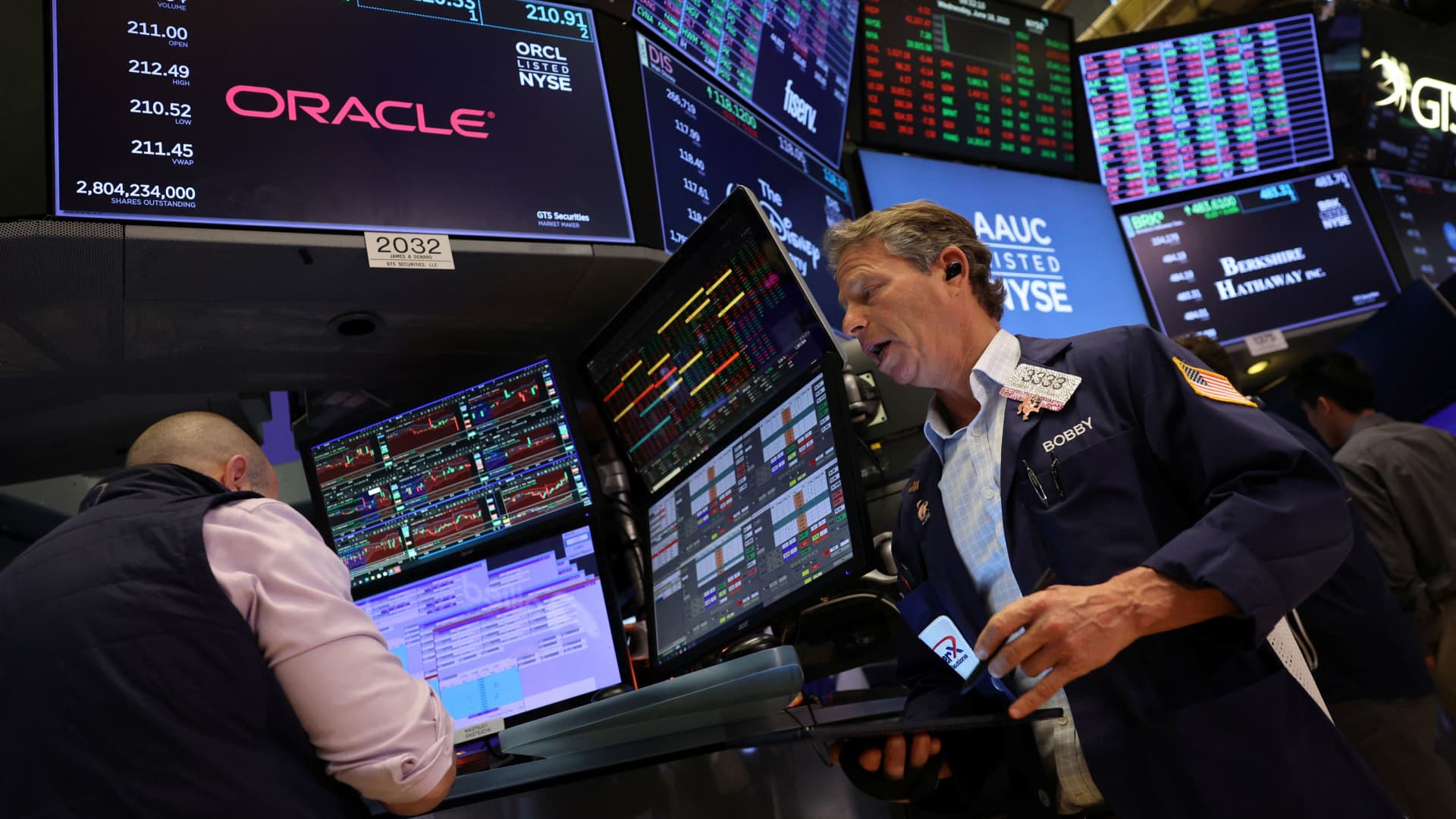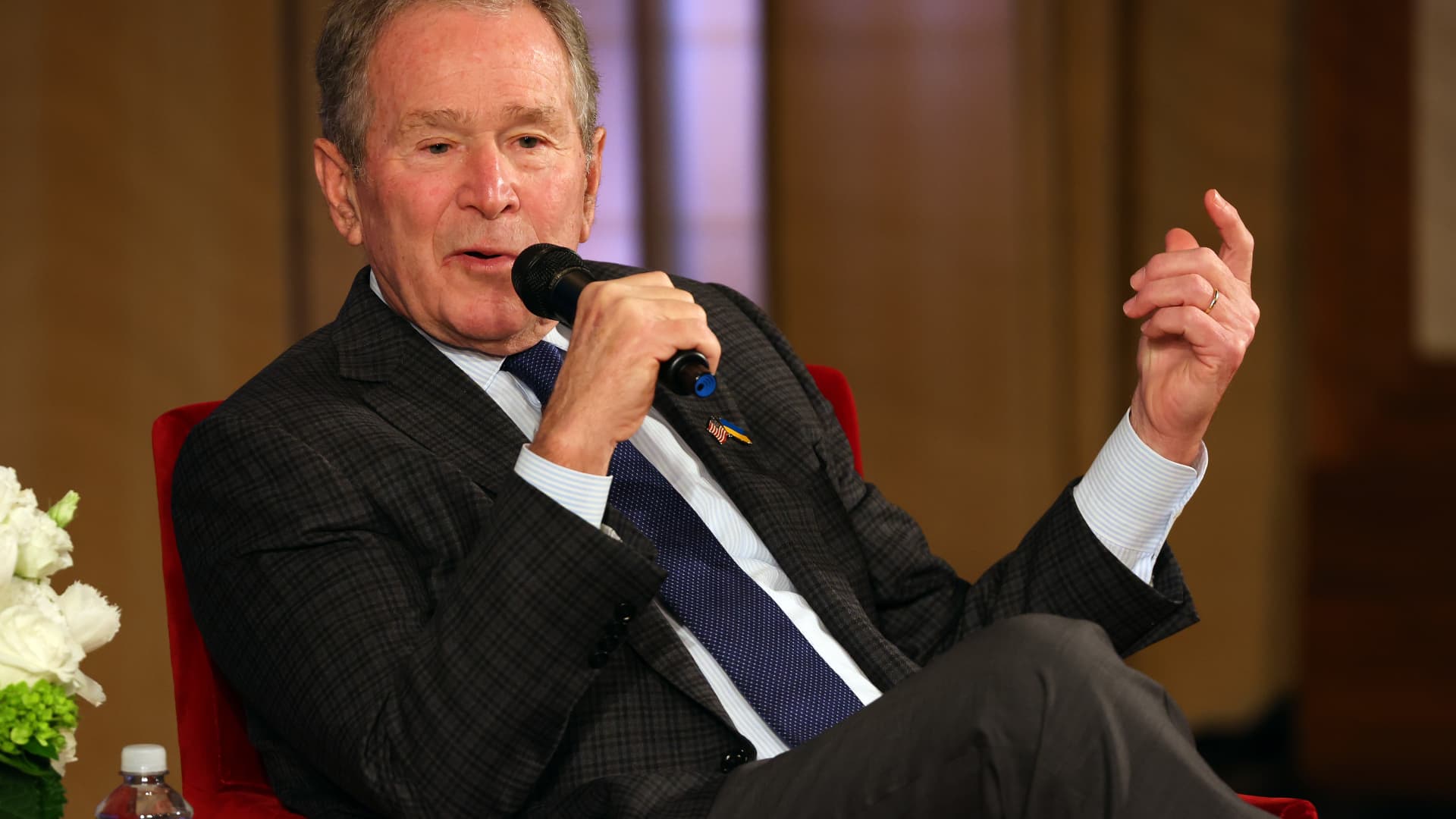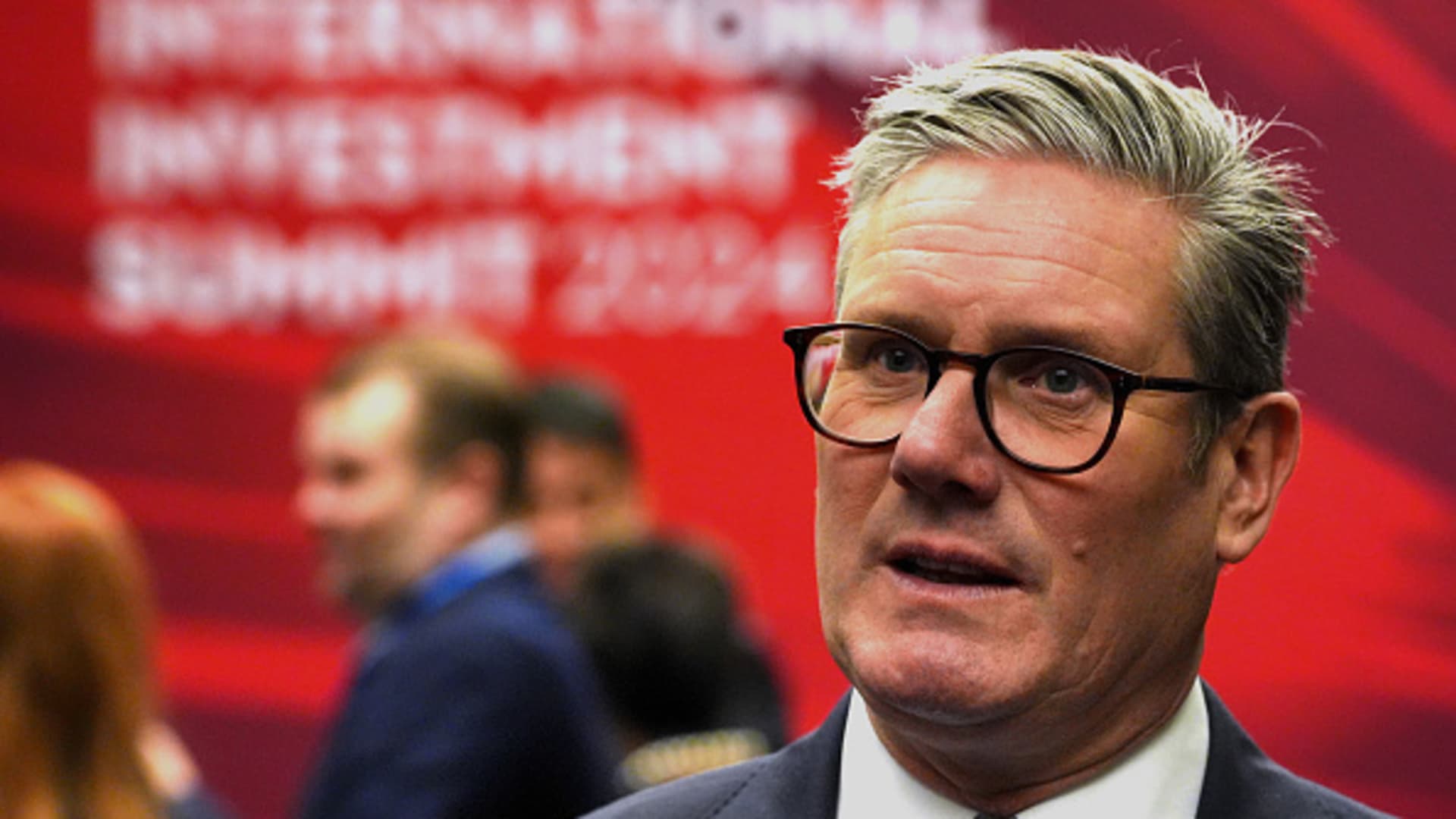Skepticism is mounting in regards to the viability of Oracle’s multiyear take care of OpenAI, an organization that has but to report a revenue. Oracle’s beautiful outcomes on Tuesday impressed confidence from the market about the long term viability of AI demand. Oracle shares ripped 36% larger on Wednesday for its finest day since 1992 . However doubts are rising in regards to the development forecast given its buyer focus and its excessive leverage. Oracle stated it has $455 billion in remaining efficiency obligations, or RPO, up 359% from a yr earlier. Nevertheless, the majority of this tally is tied to only one buyer: OpenAI . In different phrases, the market is betting on OpenAI’s capability to observe by on its dedication. CNBC confirmed a Wall Road Journal report that the AI firm agreed to purchase $300 billion in computing energy over the subsequent 5 years from Oracle starting in 2027. OpenAI has already dedicated greater than $100 billion to different AI and neocloud tasks whereas having about $12 billion in annual recurring income. In accordance with D.A. Davidson managing director Gil Luria, OpenAI would want greater than $300 billion in income to “justify that degree of spend.” Luria is without doubt one of the handful of analysts on Wall Road that stay neutral-rated on Oracle shares after its quarterly report. “Our enthusiasm for Oracle’s backlog bulletins is considerably tempered by the report that it got here nearly completely from OpenAI,” Luria stated. He famous that OpenAI’s nonprofit standing is limiting its capability to absorb the $40 billion it raised in March, though he expects this problem to be resolved by subsequent yr given Microsoft’s stake within the firm. Luria’s $300 value goal means that Oracle inventory — which is up 75% for the yr — may acquire lower than 3% from Friday’s shut. Shares slid 5% on Friday as traders raked in income after this week’s greater than 25% pop. Murky particulars JPMorgan analyst Mark Murphy equally stays neutral-rated on Oracle. He stated the risk-reward appears to be like balanced after its positive aspects this week. He lifted his year-end value goal by $60 to $270, however that suggests shares may slide greater than 7%. Murphy likes that greater than 70% of Oracle’s whole income is recurring. Additionally, he expects the corporate may gain advantage from a broader market rotation into worth as it’s a “relative secure haven” within the software program sector. Nevertheless, the murky profiles of Oracle’s contracts stays top-of-mind for the analyst. “Oracle can be closing enterprise outdoors of OpenAI, together with not less than 2 different contracts which can be value ‘multi-billions’, and but we’re at nighttime as as to whether the multi-billions add as much as $4B out of the $455B RPO stability, or $10B, $50B, $100B, and many others.— an enormous swing issue when making an attempt to evaluate buyer focus threat and chance of shoppers with the ability to fund $455B value of future funds — loads of tech firms carry web debt, and/or minimal money, and/or might be burning money for the subsequent a number of years — that listing will not be restricted to Oracle itself,” Murphy wrote Wednesday in a word to purchasers. “Brief-term buying and selling responses are usually headline-driven and managed by the instinctual thoughts, whereas deeper pondering takes longer to settle in, in some instances requiring quarters or years,” the analyst added. Though Oracle’s inventory positive aspects took the corporate to the tenth-largest spot within the S & P 500 , its money holdings paint a distinct image than its friends. The corporate had $11.2 billion in money and short-term investments on the finish of its Might 31 quarter, which is considerably lower than the “Magnificent Seven” cohort. Microsoft and Google mum or dad Alphabet , for instance, have a money moat of about $95 billion every. To make certain, Oracle reported a free money movement of $5.8 billion for its fiscal yr 2025, which marked a giant soar from the earlier yr’s $394 million. ORCL 1Y mountain Oracle inventory efficiency over the previous yr. Talks of an AI bubble Oracle’s large inventory transfer this week may mark indicators of a peak AI bubble, based on Gary Marcus, a New York College professor and Geometric Intelligence founder. OpenAI is extra weak than many individuals understand, stated Marcus. The AI researcher cited the disappointing reception for its Chat GPT-5 launch and its lack of a technical benefit to again up his declare. “There’s many causes to wonder if OpenAI is actually going to have the ability to pull this off. … There’s a lot of methods during which issues may go flawed for them — having one buyer that you’ve got this settlement with that will not even be capable of pay the payments, and, in fact, Oracle has its personal monetary points and would not even have the chips,” Marcus stated in an interview. “All of it simply appears very speculative to me. … I’d be astonished in the event that they actually did acquire the entire $300 billion.” On social media, some have flagged the hazards of an interconnected AI ecosystem, which depends on shut partnerships between AI mannequin makers, {hardware} suppliers for GPUs and infrastructure and software program makers. “How is that this all going to work precisely? ORCL has to purchase the chips, tackle extra debt, whereas OpenAI has $10B in income however will spend $60B/yr in CapEx for 5 years,” stated Ophir Gottlieb, chief government of boutique market analysis agency Capital Market Laboratories, in an X publish . Lazard portfolio supervisor Shanu Mathew equally questioned the Oracle-OpenAI deal in an X publish , writing that “a lot of AI feels levered as to whether OpenAI can ultimately generate significant revenues and maintain financing huge quantities of infrastructure … individually, even on the token utilization aspect (inference), AI continues to be AI’s largest buyer — brokers, vibe coding, and many others. It feels a little bit home of cards-y.” —CNBC’s MacKenzie Sigalos contributed to this report.



